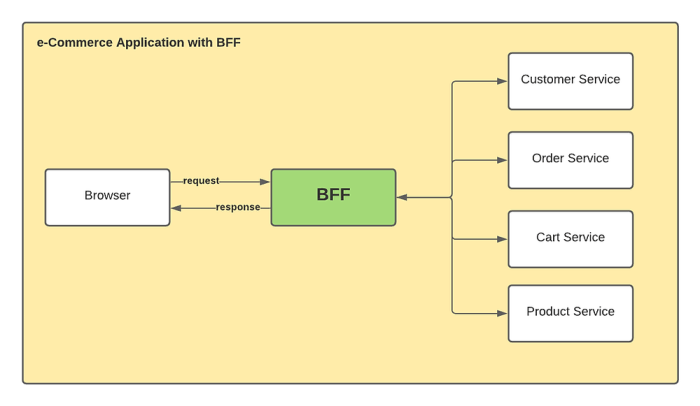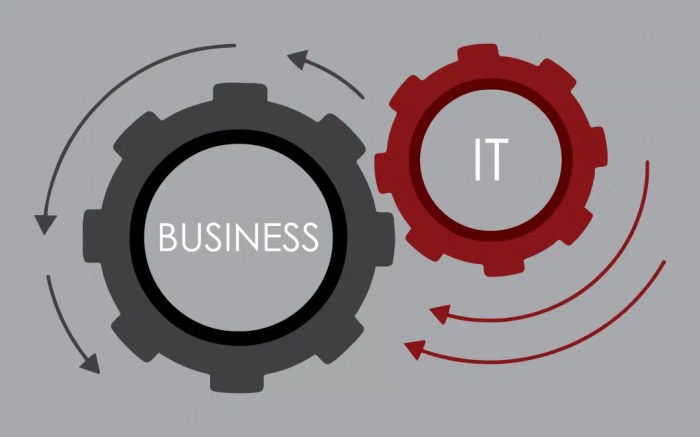The Backends for Frontends (BFF) pattern is a modern architectural approach that streamlines communication between front-end and back-end systems. By introducing a dedicated layer, the BFF acts as an intermediary, handling requests and responses to optimize performance, improve maintainability, and enhance the overall user experience. This pattern empowers developers to build more scalable and resilient applications.
This comprehensive guide explores the BFF pattern, examining its components, benefits, challenges, and technical implementation. We will delve into specific scenarios where the BFF shines, comparing it with other architectural styles like API gateways. Furthermore, we will uncover crucial aspects like data management, security, testing, and deployment strategies.
Introduction to the BFF Pattern
The Backend for Frontend (BFF) pattern is a software architectural approach that sits between a frontend application and a backend service. It acts as an intermediary, processing requests from the frontend and aggregating data from various backend services to deliver a tailored user experience. This decoupling of the frontend from the complex backend infrastructure simplifies development and enhances maintainability.This intermediary layer allows for the creation of optimized and specialized APIs that cater specifically to the needs of the front-end.
This focused approach improves performance and reduces latency, leading to a smoother and more responsive user experience. It also allows for greater flexibility in the evolution of the frontend and backend components, enabling faster development cycles and improved agility.
Core Concept of the BFF Pattern
The core concept behind the BFF pattern is to abstract away the complexities of the backend services from the frontend. Instead of the frontend directly interacting with multiple backend services, it interacts with a single, well-defined BFF service. This BFF service aggregates the necessary data from the backend services and formats it in a way that is optimal for the frontend.
Benefits of Using the BFF Pattern
The BFF pattern offers several advantages in modern application architectures:
- Improved Performance: The BFF can optimize data retrieval and transformation, reducing latency and improving the responsiveness of the frontend application. By aggregating data from multiple backend services, the BFF can cache frequently accessed data, minimizing the number of requests to the underlying services.
- Enhanced Maintainability: The separation of concerns between the frontend and backend services promotes a more modular and maintainable codebase. Changes to the backend services are less likely to impact the frontend, and vice versa. The BFF acts as a buffer between the two, reducing the risk of cascading failures.
- Simplified Frontend Development: The BFF service provides a simplified API for the frontend, abstracting away the complexities of interacting with multiple backend services. This allows frontend developers to focus on the user experience without being bogged down by intricate backend logic.
- Increased Scalability: The BFF can be scaled independently of the backend services, enabling a more flexible and scalable architecture. This can be particularly useful when the frontend experiences high traffic, as the BFF can be scaled to handle the load without impacting the underlying backend services.
Key Characteristics Distinguishing BFF from Other Approaches
The BFF pattern differs from other approaches, such as API gateways, in several key characteristics:
- Focus on Frontend Needs: The BFF is tailored to the specific needs of the frontend application. It is not a general-purpose API gateway but rather a specialized service designed to optimize the data flow for the front-end.
- Data Transformation and Aggregation: The BFF often transforms and aggregates data from multiple backend services to present a cohesive view to the frontend. API gateways primarily focus on routing requests and security.
- Specific API Design: BFFs are often designed with specific APIs for the frontend application, unlike API gateways which focus on a more general-purpose API design.
Suitable Situations for BFF Pattern Implementation
The BFF pattern is particularly well-suited for situations where:
- Complex Data Transformations are Required: When the frontend needs to consume data from multiple backend services that requires significant transformations before presentation, the BFF can handle these complex transformations efficiently.
- Frontend Performance is Critical: When the user experience relies heavily on fast response times, the BFF can optimize data retrieval and transformation to improve performance.
- Backend Services are Evolving Rapidly: When the backend services are constantly evolving, the BFF acts as a stable interface for the frontend, decoupling it from the underlying changes.
Comparison with Other Architectural Patterns
| Feature | BFF | API Gateway |
|---|---|---|
| Primary Function | Tailor data for frontend | Route and secure requests |
| Data Transformation | Extensive | Minimal |
| Frontend Integration | Direct, optimized | Indirect, through a layer |
| Scalability | Scalable independently | Scalable as a whole |
| Complexity | Moderate | Lower |
Components and Structure
The BFF pattern introduces a crucial intermediary layer between front-end applications and backend services. This layer simplifies the communication flow, improving maintainability and scalability of the overall system. This section delves into the components and structure of a typical BFF implementation, highlighting its communication channels and interactions.
Components Involved
The BFF architecture typically comprises several key components, each playing a specific role in the system. These components work in concert to provide a unified interface to the front-end while abstracting the complexities of the underlying backend services.
- Frontend Application(s): These are the user interfaces that interact with the user. They typically consume data and functionalities provided by the BFF.
- Backend-for-Frontend (BFF) Service: This is the core component. It acts as a proxy and aggregator, receiving requests from the frontend and orchestrating calls to various backend services. The BFF translates the frontend’s requests into the format understood by the backend services and vice versa.
- Backend Services (e.g., Order Service, Product Service): These are the existing services that perform specific tasks, such as processing orders, retrieving products, or managing user accounts. The BFF typically interacts with these services through well-defined APIs.
Communication Flow
The communication flow between the frontend and the BFF is a crucial aspect of the pattern. The frontend sends requests to the BFF, which then handles the necessary communication with the backend services.
- Frontend Request: The frontend application initiates a request for a specific resource or operation.
- BFF Interception: The BFF intercepts the request and determines the appropriate backend services to be invoked.
- Backend Service Calls: The BFF calls the relevant backend services, potentially multiple ones, to fulfill the request. This is where data from various sources is aggregated.
- Data Aggregation and Transformation: The BFF aggregates the responses from the backend services and transforms them into a format suitable for the frontend. This may involve data normalization and formatting.
- Response to Frontend: The BFF returns the transformed data to the frontend application, presenting a unified view of the requested information.
BFF Interaction with Backend Services
The BFF interacts with backend services through well-defined APIs. These APIs often use standard protocols like REST or gRPC, depending on the specific requirements. Crucially, the BFF abstracts the details of the backend services from the frontend. This decoupling improves maintainability and allows for independent evolution of the backend systems without impacting the frontend.
Diagram of BFF Application Structure
The following diagram illustrates the typical structure of a BFF application:
+-----------------+ +-----------------+ +-----------------+ | Frontend App | | Backend-for-Frontend | | Order Service | +-----------------+ +-----------------+ +-----------------+ | | | | Request for Order Details | | Order API Call | | | | |-------------------> |------>|-----------------+ | | | Order Data | | BFF Handles multiple calls | |-----------------+ | to multiple backend services | | | | | | Translates to frontend format | | |----------------------------------v| | | | | | Return to Frontend Application | | +---------------------------------+ +-----------------+ | | | Product Service | +---------------------------------+ | Product API Call | +---------------------------------+ This diagram depicts the request flow, highlighting the interaction between the frontend, BFF, and backend services. It illustrates the aggregation of data from various sources by the BFF.
Responsibilities of Each Component
The following table summarizes the responsibilities of each component in the BFF pattern:
| Component | Responsibilities |
|---|---|
| Frontend Application | User interaction, display data, and send requests to the BFF |
| BFF Service | Receiving requests from frontend, routing to backend services, aggregating responses, transforming data, and returning data to the frontend |
| Backend Services | Performing specific tasks, providing data to the BFF via APIs |
Benefits of Using BFF
The Backend for Frontend (BFF) pattern offers significant advantages in modern application development, particularly when dealing with complex front-end interactions and intricate backend systems. By creating a dedicated layer between the front-end and backend services, BFFs streamline communication and improve the overall application experience.
The primary benefits of employing BFFs lie in enhanced performance, improved scalability, simplified maintenance, and effective management of application complexity. This dedicated layer acts as a crucial intermediary, optimizing data flow and improving the overall efficiency of the application.
Performance Advantages
The BFF pattern directly impacts performance by aggregating data from multiple backend services into a single, optimized response for the front-end. This eliminates redundant requests and reduces latency, leading to a faster and more responsive user experience. By combining data from different sources into a single payload, the BFF minimizes the number of round trips between the front-end and backend, improving the application’s speed and responsiveness.
This approach often translates to faster loading times for web pages and applications, contributing to a more seamless user experience.
Scalability and Maintainability
The BFF pattern significantly enhances scalability and maintainability. By abstracting away the complexities of multiple backend services, the BFF enables independent scaling of the front-end and backend components. This separation allows for more granular control over resource allocation, leading to more efficient use of resources. Moreover, the modular design of the BFF promotes maintainability by isolating changes to individual services.
Modifications to the backend services can be implemented without impacting the front-end application, as the BFF acts as a buffer, reducing the risk of unintended consequences and simplifying updates.
Managing Complexity
The BFF pattern provides a valuable approach to managing the complexity of modern applications. By encapsulating the interaction logic with multiple backend services, the BFF simplifies the front-end’s interaction model. This streamlined interaction model significantly reduces the complexity of the front-end codebase, allowing developers to focus on the user interface and user experience without getting bogged down in intricate backend interactions.
This approach leads to more maintainable and scalable applications, as the complexities of backend communication are hidden behind the BFF layer.
Easier Updates and Maintenance
The BFF pattern greatly simplifies updates and maintenance of front-end applications. Changes to the backend services can be made without requiring extensive front-end modifications. The BFF acts as an intermediary, handling the necessary communication and data transformations. This reduced coupling between front-end and backend services makes the application easier to update and maintain. Consequently, this modularity simplifies future development and allows for quicker deployment cycles.
Modularity and Independence
The BFF pattern promotes the independence of front-end and backend teams. By separating the front-end and backend interactions through the BFF layer, the front-end team can focus on user experience and interface development, while the backend team can concentrate on their specific services without worrying about front-end concerns. This separation of concerns enhances collaboration and allows for more efficient workflow.
This independence enables faster development cycles and fosters a more collaborative development environment.
Challenges and Considerations

Implementing the Backend for Frontend (BFF) pattern, while offering numerous advantages, presents certain challenges. Understanding these potential issues is crucial for successful implementation and mitigating risks. Careful planning and consideration of these factors can lead to a more robust and efficient application architecture.
The BFF pattern, by its nature, introduces an intermediary layer between the frontend and backend services. This intermediary layer, while beneficial for decoupling and streamlining, can also introduce complexities in various areas. Careful attention to potential challenges, such as data consistency, performance implications, and security considerations, is essential for successful implementation.
Potential Data Consistency Issues
Maintaining data consistency across multiple services, particularly when the BFF acts as a central point for data aggregation, requires careful design and implementation. Inconsistencies can arise if data sources are not synchronized or if the BFF does not properly handle potential conflicts. A critical aspect is ensuring that data updates made through the BFF are reflected accurately and reliably across all downstream services.
In scenarios where data originates from various databases, the BFF must manage the complexities of ensuring data integrity and avoiding inconsistencies.
Performance Implications of the BFF Layer
Introducing an additional layer, the BFF, can potentially impact application performance. Increased latency can occur due to the added network calls and processing within the BFF. Efficient design and appropriate caching strategies are crucial to mitigate these performance implications. For example, a poorly implemented caching mechanism can lead to repeated data retrieval from backend services, thereby negatively impacting overall application performance.
Security Considerations in the BFF Pattern
The BFF layer, as a gateway to backend services, presents security considerations. It becomes a single point of entry for all frontend requests, making it vulnerable to attacks. Careful authentication and authorization mechanisms must be implemented within the BFF to protect against unauthorized access. Strict access controls should be implemented, limiting the BFF’s ability to access sensitive data within the backend services.
Appropriate security measures, such as input validation and output encoding, should be implemented to protect against common web vulnerabilities.
Mitigation Strategies for Potential Issues
| Potential Issue | Mitigation Strategy |
|---|---|
| Data Inconsistency | Implement robust data synchronization mechanisms between services. Utilize distributed transactions or optimistic locking to prevent conflicts. Employ data validation rules within the BFF to ensure data integrity. |
| Performance Degradation | Implement caching strategies to reduce redundant requests to backend services. Optimize the BFF’s code and database queries to minimize processing time. Utilize appropriate load balancing techniques to distribute traffic across multiple BFF instances. |
| Security Vulnerabilities | Employ comprehensive authentication and authorization mechanisms at the BFF layer. Implement input validation and output encoding to prevent common web vulnerabilities. Regular security audits and penetration testing are recommended. Consider using API gateways for added security layers. |
| Complexity in Managing Multiple Services | Use a well-defined API contract between the BFF and backend services. Implement clear communication protocols and documentation. Employ a robust monitoring system to track the performance and health of all services. |
Technical Implementation Details

The practical implementation of a BFF hinges on careful selection of technologies, design of API endpoints, and strategies for handling requests and responses. This section delves into the specifics of these considerations, providing a concrete example to illustrate the process.
A well-designed BFF acts as an intermediary layer, optimizing the interaction between front-end applications and the underlying microservices. By handling requests and routing them appropriately, the BFF simplifies the front-end’s complexity, improving maintainability and scalability.
Example of a BFF Implementation
This example utilizes Node.js with Express.js as the backend framework. The BFF will serve as an intermediary for a hypothetical e-commerce application. The underlying microservices include product catalog, order processing, and user management.
- The BFF will receive a request from the front-end to retrieve product details for a specific ID. It will then forward this request to the product catalog microservice, and receive the appropriate data in JSON format.
- The BFF will handle the response from the product catalog service and combine it with data from other microservices (e.g., order history) as needed, before returning a consolidated response to the front-end.
- The front-end receives the consolidated response and renders the product information to the user.
Technologies and Tools Commonly Used
Several technologies are frequently employed for BFF implementation. The choice often depends on the specific project requirements and existing infrastructure.
- Node.js/Express.js: Popular for their ability to handle requests, provide a robust API, and their compatibility with various data formats (JSON, XML). Node.js is a high-performance platform, while Express.js is a minimal and flexible framework. This combination allows for rapid development and deployment.
- Python/Flask or Django: Python, with frameworks like Flask or Django, offers excellent flexibility for building APIs. Python’s vast ecosystem of libraries often enhances the development process.
- Java/Spring Boot: For projects with existing Java infrastructure or specific Java-based requirements, Spring Boot is a suitable option. Its modularity and ease of integration with other Spring technologies make it an attractive choice for building APIs.
- API Gateways (e.g., Kong, Apigee): These tools can be used for traffic management, security, and monitoring purposes, improving the overall performance and security of the BFF.
API Endpoint Design
Well-defined API endpoints are crucial for the BFF’s success. They need to be consistent and easy to understand for the front-end.
- Structure: API endpoints should follow a clear structure, allowing the front-end to easily identify the required information and data. A well-structured endpoint typically includes the resource being accessed (e.g., /products, /orders) and any required parameters (e.g., /products/id).
- HTTP Methods: The use of appropriate HTTP methods (GET, POST, PUT, DELETE) is essential for controlling the interaction with the underlying services.
- Error Handling: The BFF should implement comprehensive error handling mechanisms, returning standardized error responses to the front-end, aiding debugging and providing a consistent user experience.
Request and Response Handling
The BFF acts as a central point for routing requests to the correct microservices and assembling the responses.
- Request Routing: The BFF should have a robust routing mechanism to forward requests to the appropriate microservices, often based on the incoming request parameters or headers.
- Response Aggregation: The BFF needs to assemble responses from various microservices into a coherent response for the front-end. This may involve combining data from multiple sources or transforming the data into a suitable format.
Data Formats
The BFF should be able to handle various data formats, such as JSON and XML.
- JSON: A widely used format due to its readability and simplicity. JSON is often the preferred choice for modern API interactions. Its structure allows for easy parsing and manipulation of data.
- XML: While less prevalent than JSON, XML is still used in certain contexts. XML provides a more structured and verbose format, which can be advantageous in specific scenarios.
Data Management and Consistency
Maintaining data consistency across the frontend and backend services is crucial for a reliable and user-friendly application. The BFF pattern, by acting as an intermediary, offers significant opportunities to manage data effectively. This section will explore strategies for ensuring data consistency, handling transformations, leveraging caching, and managing data versioning.
Data consistency is achieved by defining clear data contracts and implementing robust validation rules within the BFF. By abstracting away the complexities of multiple backend services, the BFF becomes a single point of contact for the frontend, ensuring a predictable and consistent data flow.
Strategies for Ensuring Data Consistency
The BFF acts as a central hub, responsible for aggregating and transforming data from various backend services. This centralized approach simplifies the process of ensuring data consistency. Data validation rules are implemented within the BFF to verify the integrity of the received data, preventing inconsistencies from propagating to the frontend. For instance, if a particular field is required, the BFF can enforce this requirement, ensuring that the data presented to the frontend is complete and valid.
Techniques for Handling Data Transformations and Aggregations
The BFF can perform complex data transformations and aggregations, which would otherwise be challenging for the frontend to manage. By using a dedicated transformation layer, the BFF can modify data structures, format values, and combine data from multiple sources into a unified representation suitable for the frontend. This allows the frontend to focus on presenting the data to the user, without needing to deal with the intricacies of the backend services.
For example, the BFF can consolidate data from multiple APIs into a single response, eliminating the need for the frontend to make multiple requests.
Caching Strategies for Performance Improvement
Caching plays a vital role in improving the performance of the BFF pattern. It reduces the number of requests to backend services, leading to faster response times for the frontend. By caching frequently accessed data, the BFF can significantly reduce latency. Common caching strategies include CDN (Content Delivery Network) caching and in-memory caching solutions like Redis.
Data Versioning Management
Data versioning is important to maintain compatibility and track changes over time. The BFF can manage data versions by storing different versions of the data or providing mechanisms to request specific versions. This is particularly helpful when the backend services change their data structure or provide new features. This ensures that the frontend receives the expected data, regardless of backend changes.
Examples of Caching Strategies
- Content Delivery Network (CDN) Caching: CDNs cache static assets like images and CSS files, reducing the load on origin servers. This improves the performance of the frontend by delivering these assets from a server geographically closer to the user. For example, a CDN can cache images used on a product detail page, allowing faster loading times for users worldwide.
- Redis Caching: Redis is an in-memory data store that can be used for caching frequently accessed data. It provides high performance and can be integrated seamlessly into the BFF. For instance, if a user frequently requests product details, the BFF can cache those details in Redis, significantly reducing the number of database queries needed to serve the request.
Real-World Examples and Case Studies

The BFF pattern’s practical application across diverse industries showcases its adaptability and effectiveness. Successful implementations demonstrate how this approach can streamline development, enhance user experience, and improve overall application performance. Examining these case studies provides valuable insights into the challenges faced and the strategies employed to overcome them.
Successful BFF Implementations
Numerous organizations have successfully implemented BFF architectures to achieve specific goals. A key factor in these successes is the careful consideration of the application’s specific needs and constraints. For instance, organizations aiming to decouple front-end development from back-end complexities, leading to faster iteration cycles and improved maintainability, have often seen positive results with BFF.
- A large e-commerce platform utilized BFF to manage complex product catalogs and recommendations. This separation allowed front-end developers to focus on user interfaces and experiences, while back-end teams could concentrate on optimizing data retrieval and processing. The result was a significantly faster response time for product searches and improved customer satisfaction, with a noticeable reduction in load times.
- A social media platform leveraged BFF to handle real-time updates and personalized feeds. By centralizing the logic for these features in the BFF layer, the platform could improve responsiveness and streamline data delivery. This approach reduced the load on the core back-end services, improving overall system stability and enabling scalability.
Challenges and Solutions in BFF Implementations
Implementing the BFF pattern is not without its challenges. A common issue is the need to manage data consistency between the BFF and the underlying services. Addressing this requires careful design and robust mechanisms to ensure data integrity. Properly defined APIs and robust error handling play a critical role in mitigating potential problems.
- Data Consistency: Ensuring data consistency between the BFF and back-end services is a critical concern. To address this, implement strategies such as data caching and real-time synchronization mechanisms. For example, caching frequently accessed data at the BFF layer can significantly reduce latency and improve performance. Establishing clear data validation rules and protocols at both the BFF and back-end levels can prevent inconsistencies from arising in the first place.
- Complexity Management: The initial design and implementation of a BFF can be complex, particularly when dealing with large, existing systems. Careful planning and a phased approach can minimize the complexity and ensure a smooth transition. Divide the implementation into smaller, manageable modules, enabling parallel development and gradual integration. A well-defined API contract for interaction between the BFF and back-end services reduces the complexity associated with updates and modifications.
Case Studies from Various Industries
The BFF pattern has proven beneficial across various industries. Its impact on user experience, development speed, and system performance has been demonstrably positive. Examples from the financial services, healthcare, and travel sectors demonstrate the widespread applicability of the pattern.
| Industry | Application | Impact |
|---|---|---|
| E-commerce | Product catalog and recommendations | Faster response times, improved customer satisfaction, reduced load times |
| Social Media | Real-time updates and personalized feeds | Improved responsiveness, streamlined data delivery, enhanced system stability, scalability |
| Financial Services | Transaction processing and account management | Enhanced security, reduced latency, improved user experience |
Impact of BFF on Different Applications
The BFF pattern’s impact on different applications is multifaceted. It can lead to faster development cycles, improved scalability, and a better user experience. The pattern often results in a more manageable and maintainable codebase, which in turn reduces the risk of errors and facilitates future updates.
Final Summary
In conclusion, the Backends for Frontends (BFF) pattern offers a powerful solution for modern application architecture. By carefully considering its components, advantages, and potential drawbacks, developers can leverage this approach to build robust, scalable, and maintainable applications. This detailed exploration provides a comprehensive understanding, enabling informed decisions about implementing the BFF pattern within your projects.
Essential Questionnaire
What are the primary benefits of using the BFF pattern?
The BFF pattern enhances performance by reducing latency, improves maintainability by isolating frontend concerns, and promotes scalability by allowing independent scaling of the BFF and backend services. It also enables easier updates to the frontend without affecting the backend.
How does the BFF pattern manage data consistency across different services?
Data consistency is managed by careful design of data transformations and aggregations within the BFF layer. Appropriate caching strategies, including CDN and Redis, can further enhance consistency and performance. Strict data versioning and validation rules are also essential.
What are some common security concerns when implementing a BFF?
Security concerns include authentication, authorization, rate limiting, and potential vulnerabilities in the BFF service. Implementing robust security measures, such as access controls and encryption, is crucial. Proper input validation and output sanitization also help prevent common attacks.
What are some common technologies used for implementing a BFF?
Common technologies for implementing a BFF include various programming languages (e.g., Java, Node.js, Python), and frameworks for building APIs (e.g., Spring Boot, Express.js). Cloud platforms like AWS and Azure offer tools and services that simplify deployment and management.


